#not for public use
Text


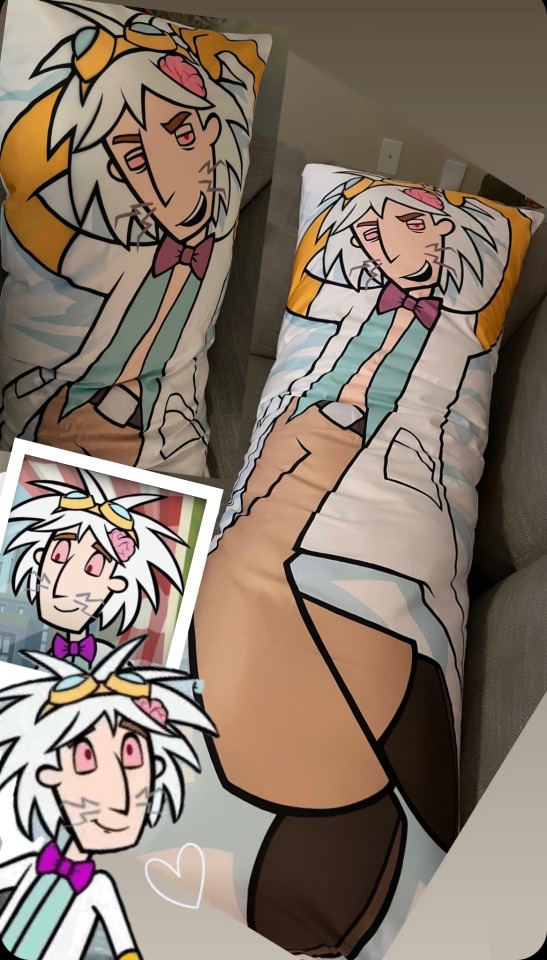

Two Brain dakimakura.
#word girl#not for public use#dr two brains#steven boxleitner#dakimakura#two brains#fanart#body pillow
140 notes
·
View notes
Text
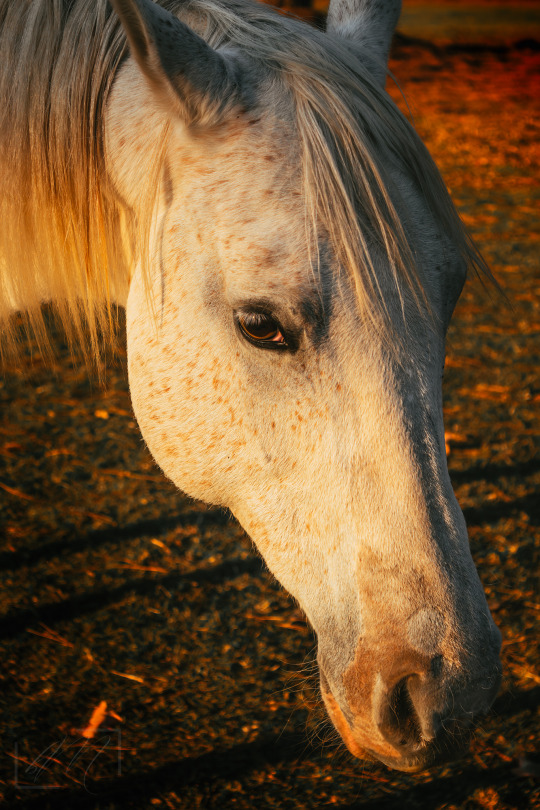
golden girl, nc, 2023
↳ canon eos rebel t6
↳ lightroom
take my carrd 💖
#photography#animal photography#horse#horse photography#equine#equine photography#equestrian#photographers of tumblr#photographers on tumblr#artistsupport#north carolina#canon photography#click for better quality#DO NOT REPOST; reblog instead <3#not for public use
9 notes
·
View notes
Text
You are allowed to exist alone in public btw. You're allowed to go to the movies alone and go out to eat alone and hang out in a park alone and go for a walk alone and whatever else. It isn't weird or creepy, it doesn't make you lonely or a loser or whatever. You are allowed to just exist as yourself.
#this was prompted by the trend of taking videos and photos of people who are alone in public#especially when they're in restaurants#like i'm sorry but maybe some of us just like our solitude#and we still deserve to exist in public without some asshole taking videos of us to post on tiktok
32K notes
·
View notes
Text
when making a character remember! are they a FAG?
Fucked up beyond belief
Actually would suck in real life (and ideally in the story too)
Gay
#krill chirps#my stuff#🕷️#didnt use the quirk because i dont really like using it on public posts#especially this one#which i really want to go far
18K notes
·
View notes
Text
A general tip for students who are sending those dreaded Religious Absence Emails to your professors: Rather than asking permission to take the day(s) off, politely let them know that you will be taking the day(s) off.
In other words, consider not saying this:
"May I miss class on [date] so I can observe [holiday]?"
It's not that there's anything wrong with the above, per se. But because it's phrased as a request, it risks coming across as optional — a favor you hope to be granted. Problem is, favors are not owed, and so unfortunately asking permission opens the door for the professor to respond "Thanks for asking. No, you may not. :)"
Instead, try something along the lines of:
"I will need to miss class on [date] because I will be observing [holiday]. I wanted to let you know of this conflict now, and to ask your assistance in making arrangements for making up whatever material I may miss as a result of this absence."
This is pretty formal language (naturally, you can and should tweak it to sound more like your voice). But the important piece is that, while still being respectful, it shifts the focus of the discussion so that the question becomes not "Is it okay for me to observe my religion?", but rather, "How can we best accommodate my observance?"
Because the first question should not be up for debate: freedom of religion is a right, not a favor. And the second question is the subject you need to discuss.
(Ideally, do this after you've looked up your school's policy on religious absences, so you know what you're working within and that religious discrimination is illegal. Just in case your professor forgot.)
#this strategy got me through all of college#and some professors were a lot more supportive than others but no one ever told me no#because i didn't give them the chance#jumblr#judaism#religious absences#relevant to other minority religions as well#as well as non-religious accommodations#and non-school settings#dandelion says#jewish dandelion#note: the policy/legality details will vary depending on where you live and go to school#when i talk about religious discrimination laws this is based on public universities in the us
17K notes
·
View notes
Note
Sorry I'm kind of dissociated and my vocab crashes during that can you explain the Biden drug thing in just. Shorter simple sentences.
Sure! You're not the only one who's mentioned being unclear on what it means either, and I'm happy to help
(Context for anyone else: US Sets Policy to Seize Patents of Government-Funded Drugs if Price Deemed Too High, via Good News Network, December 11, 2023)
From the very basics:
When drug companies create new drugs, they get a legal protection called a "patent." The patent means no one else can make or sell the same drug for whatever number of years.
Usually, this is about 10 years after the drug starts being sold to the public.
So, for those years, that one drug company is the only source of whatever medication. And since people need their medication, drug companies can charge however much money they want.
Meaning a lot of drugs that people need to live cost way too much money to buy.
So, with this, Biden told drug companies "Fuck you, if you keep making medicine too $$$ for people to afford, I'm giving your competition the right to make and sell those drugs too."
The US has never done anything like this before.
This is a huge threat to the whole (awful) drug industry in the US. It will save people thousands of dollars. If he does this, it will save lives.
--
Edit 12/17/23: Quick note, as people have said in the notes, this only applies to drugs made in part using taxpayer money. Which is! Literally all of them!
#Anonymous#prescription drugs#medicine#public health#biden#biden administration#united states#us politics#ask#me#good news#hope
13K notes
·
View notes
Text
Things I've learned from getting covid for the first time in 2023
I wear an N95 in public spaces and I've managed to dodge it for a long time, but I finally got covid for the first time (to my knowledge) in mid-late November 2023. It was a weird experience especially because I feel like it used to be something everyone was talking about and sharing info on, so getting it for the first time now (when people generally seem averse to talking about covid) I found I needed to seek out a lot of info because I wasn't sure what to do. I put so much effort into prevention, I knew less about what to do when you have it. I'm experiencing a rebound right now so I'm currently isolating.
So, I'm making a post in the hopes that if you get covid (it's pretty goddamn hard to avoid right now) this info will be helpful for you. It's a couple things I already knew and several things I learned. One part of it is based on my experience in Minnesota but some other states may have similar programs.
--------
The World Health Organization states you should isolate for 10 days from first having symptoms plus 3 days after the end of symptoms.
--------
At the time of my writing this post, in Minnesota, we have a test to treat program where you can call, report the result of your rapid test (no photo necessary) and be prescribed paxlovid over the phone to pick up from your pharmacy or have delivered to you. It is free and you do not need to have insurance. I found it by googling "Minnesota Test to Treat Covid"
--------
Paxlovid decreases the risk of hospitalization and death, but it's also been shown to decrease the risk of Long Covid. Long Covid can occur even from mild or asymptomatic infections.
--------
Covid rebound commonly occurs 2-8 days after apparent recovery. While many people associate Paxlovid with covid rebound, researchers say there is no strong evidence that Paxlovid causes covid rebound, and rebounds occur in infections that were not treated with Paxlovid as well. I knew rebounds could happen but did not know it could take 8 days. I had mine on day 7 and was completely surprised by it.
--------
If you start experiencing new symptoms or test positive again, the CDC states that you should start your isolation period again at day zero. Covid rebound is still contagious. Personally I'd suggest wearing a high quality respirator around folks for an additional 8-9 days after you start to test negative in case of a rebound.
--------
Positive results on a rapid test can be very faint, but even a very faint line is positive result. Make sure to look at your rapid test result under strong lighting. Also, false negatives are not uncommon. If you have symptoms but test negative taking multiple tests and trying different brands if you have them are not bad ideas. My ihealth tests picked up my covid, my binax now tests did not.
--------
EDIT: I'd highly suggest spending time with friends online if you can, I previously had a link to the NAMI warmline directory in this post but I've since been informed that NAMI is very much funded by pharmaceutical companies and lobbies for policies that take autonomy away from disabled folks, so I've taken that off of here! Sorry, I had no idea, the People's CDC listed them as a resource so I just assumed they were legit! Feel free to reply/reblog this with other warmlines/support resources if you know of them! And please reblog this version!
--------
I know that there is so much we can't control as individuals right now, and that's frightening. All we can do is try our best to reduce harm and to care for each other. I hope this info will be able to help folks.
#covid#covid 19#harm reduction#apparently only 16% of Americans even got their booster#it's wild out there#which makes sense because our public health messaging has been super unhelpful and intentionally shifted the burden#of infection control onto individuals to avoid us holding them accountable because it's politically and economically inconvenient to them
9K notes
·
View notes
Text

eve of an equinox, nc, 2023
↳ canon eos rebel t6
↳ lightroom
take my carrd 💖
#photography#golden hour#golden hour photography#fall aesthetic#autumn#autumn photography#nature#naturecore#photographers of tumblr#photographers on tumblr#artistsupport#north carolina#canon photography#click for better quality#contact for prints#DO NOT REPOST; reblog instead <3#not for public use
5 notes
·
View notes
Text
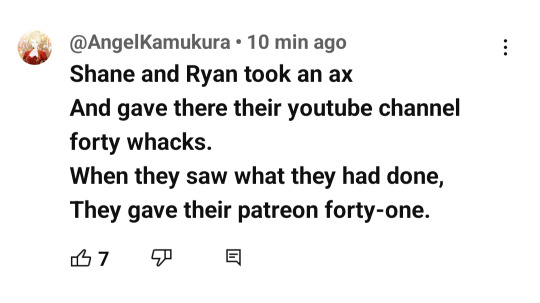


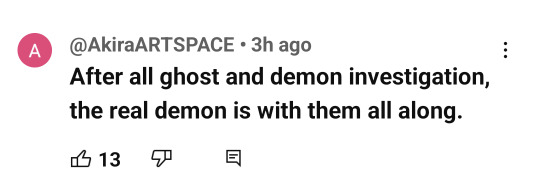
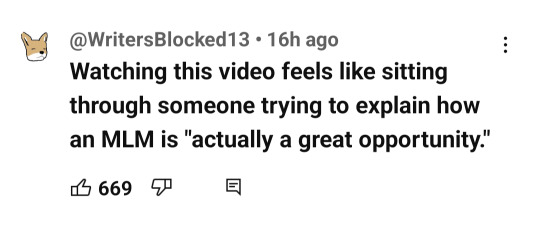
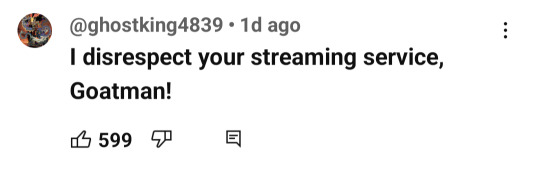

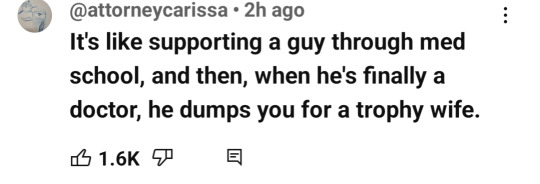


Just a few of the comments from YouTube that amused me.
#watcher#watcher entertainment#the ghoul boys#ryan and shane#ryan bergara#shane madej#steven lim#youtube comments#hopefully they'll learn and get better#we're all human and all make mistakes but moat of us dont do it on this public of a stage
4K notes
·
View notes
Text
A list of some of my favorite things to say when I'm bottomed out in a tight, soft, hot little cunnie ❤️
"God, you're such a slutty little baby, aren't you?"
"Daddy's cock feels good, doesn't it?"
"Your cunnie is so soft and tight baby, Daddy has to rape it harder"
"Gonna breed your little cunnie, baby. Daddy's gonna make you his little breeding whore"
"Daddy's sorry baby, Daddy's sorry. Your pussy is too good, Daddy has to rape you"
"You're such a little whore for letting me cum inside."
"Keep crying little girl, it makes your pussy tighter"
"Crying turns Daddy on even more, princess"
"You know Daddy only does this because he cares about you, right baby?"
"Keep that little mouth quiet, angel. People are gonna think I'm raping you"
"You make Daddy's cock feel so good"
"Your little holes feel so good baby, Daddy's gonna fill all of them up"
"I know you were sleeping baby, but your pussy is just so much tighter...."
"You like having rough sex with Daddy? Getting your little pussy stretched and creampied? Good girl"
#cnc k!nk#bd/sm kink#rough cnc#cnc free use#daddy k!nk#rough kink#bd/sm community#breeding k1nk#breeding cnc#cnc public#cnc pet#fauxcest#fauxc3st#cnc somno
5K notes
·
View notes
Photo
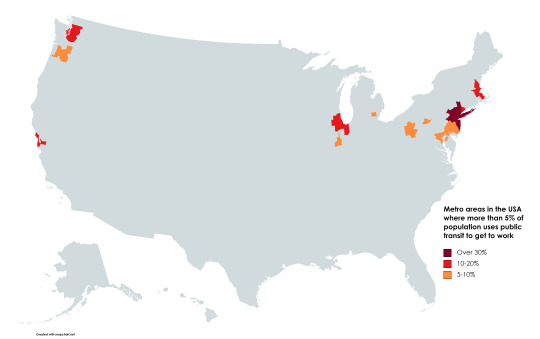
Metro areas in the USA where more than 5% of population uses public transit to get to work.
by u/mexidominicarican8
12K notes
·
View notes
Text
It all started with a mouse
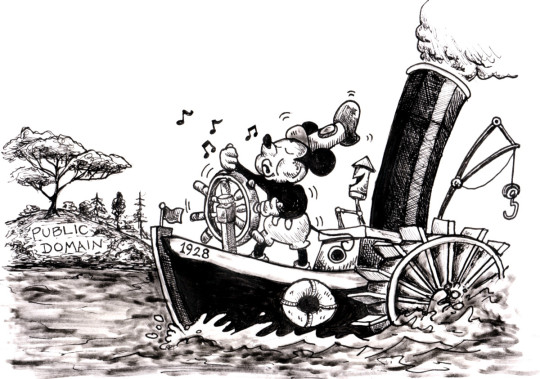
For the public domain, time stopped in 1998, when the Sonny Bono Copyright Act froze copyright expirations for 20 years. In 2019, time started again, with a massive crop of works from 1923 returning to the public domain, free for all to use and adapt:
https://web.law.duke.edu/cspd/publicdomainday/2019/
No one is better at conveying the power of the public domain than Jennifer Jenkins and James Boyle, who run the Duke Center for the Study of the Public Domain. For years leading up to 2019, the pair published an annual roundup of what we would have gotten from the public domain in a universe where the 1998 Act never passed. Since 2019, they've switched to celebrating what we're actually getting each year. Last year's was a banger:
https://pluralistic.net/2022/12/20/free-for-2023/#oy-canada
But while there's been moderate excitement at the publicdomainification of "Yes, We Have No Bananas," AA Milne's "Now We Are Six," and Sherlock Holmes, the main event that everyone's anticipated arrives on January 1, 2024, when Mickey Mouse enters the public domain.
The first appearance of Mickey Mouse was in 1928's Steamboat Willie. Disney was critical to the lobbying efforts that extended copyright in 1976 and again in 1998, so much so that the 1998 Act is sometimes called the Mickey Mouse Protection Act. Disney and its allies were so effective at securing these regulatory gifts that many people doubted that this day would ever come. Surely Disney would secure another retrospective copyright term extension before Jan 1, 2024. I had long arguments with comrades about this – people like Project Gutenberg founder Michael S Hart (RIP) were fatalistically certain the public domain would never come back.
But they were wrong. The public outrage over copyright term extensions came too late to stave off the slow-motion arson of the 1976 and 1998 Acts, but it was sufficient to keep a third extension away from the USA. Canada wasn't so lucky: Justin Trudeau let Trump bully him into taking 20 years' worth of works out of Canada's public domain in the revised NAFTA agreement, making swathes of works by living Canadian authors illegal at the stroke of a pen, in a gift to the distant descendants of long-dead foreign authors.
Now, with Mickey's liberation bare days away, there's a mounting sense of excitement and unease. Will Mickey actually be free? The answer is a resounding YES! (albeit with a few caveats). In a prelude to this year's public domain roundup, Jennifer Jenkins has published a full and delightful guide to The Mouse and IP from Jan 1 on:
https://web.law.duke.edu/cspd/mickey/
Disney loves the public domain. Its best-loved works, from The Sorcerer's Apprentice to Sleeping Beauty, Pinnocchio to The Little Mermaid, are gorgeous, thoughtful, and lively reworkings of material from the public domain. Disney loves the public domain – we just wish it would share.
Disney loves copyright's other flexibilities, too, like fair use. Walt told the papers that he took his inspiration for Steamboat Willie from Charlie Chaplin and Douglas Fairbanks, making fair use of their performances to imbue Mickey with his mischief and derring do. Disney loves fair use – we just wish it would share.
Disney loves copyright's limitations. Steamboat Willie was inspired by Buster Keaton's silent film Steamboat Bill (titles aren't copyrightable). Disney loves copyright's limitations – we just wish it would share.
As Jenkins writes, Disney's relationship to copyright is wildly contradictory. It's the poster child for the public domain's power as a source of inspiration for worthy (and profitable) new works. It's also the chief villain in the impoverishment and near-extinction of the public domain. Truly, every pirate wants to be an admiral.
Disney's reliance on – and sabotage of – the public domain is ironic. Jenkins compares it to "an oil company relying on solar power to run its rigs." Come January 1, Disney will have to share.
Now, if you've heard anything about this, you've probably been told that Mickey isn't really entering the public domain. Between trademark claims and later copyrightable elements of Mickey's design, Mickey's status will be too complex to understand. That's totally wrong.

Jenkins illustrates the relationship between these three elements in (what else) a Mickey-shaped Venn diagram. Topline: you can use all the elements of Mickey that are present in Steamboat Willie, along with some elements that were added later, provided that you make it clear that your work isn't affiliated with Disney.
Let's unpack that. The copyrightable status of a character used to be vague and complex, but several high-profile cases have brought clarity to the question. The big one is Les Klinger's case against the Arthur Conan Doyle estate over Sherlock Holmes. That case established that when a character appears in both public domain and copyrighted works, the character is in the public domain, and you are "free to copy story elements from the public domain works":
https://freesherlock.files.wordpress.com/2013/12/klinger-order-on-motion-for-summary-judgment-c.pdf
This case was appealed all the way to the Supreme Court, who declined to hear it. It's settled law.
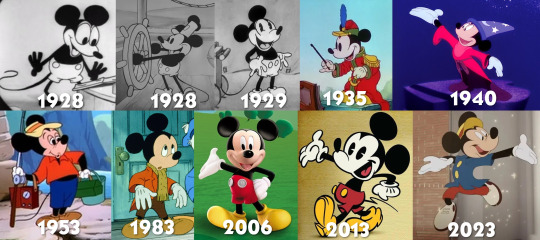
So, which parts of Mickey aren't going into the public domain? Elements that came later: white gloves, color. But that doesn't mean you can't add different gloves, or different colorways. The idea of a eyes with pupils is not copyrightable – only the specific eyes that Disney added.
Other later elements that don't qualify for copyright: a squeaky mouse voice, being adorable, doing jaunty dances, etc. These are all generic characteristics of cartoon mice, and they're free for you to use. Jenkins is more cautious on whether you can give your Mickey red shorts. She judges that "a single, bright, primary color for an article of clothing does not meet the copyrightability threshold" but without settled law, you might wanna change the colors.
But what about trademark? For years, Disney has included a clip from Steamboat Willie at the start of each of its films. Many observers characterized this as a bid to create a de facto perpetual copyright, by making Steamboat Willie inescapably associated with products from Disney, weaving an impassable web of trademark tripwires around it.
But trademark doesn't prevent you from using Steamboat Willie. It only prevents you from misleading consumers "into thinking your work is produced or sponsored by Disney." Trademarks don't expire so long as they're in use, but uses that don't create confusion are fair game under trademark.
Copyrights and trademarks can overlap. Mickey Mouse is a copyrighted character, but he's also an indicator that a product or service is associated with Disney. While Mickey's copyright expires in a couple weeks, his trademark doesn't. What happens to an out-of-copyright work that is still a trademark?
Luckily for us, this is also a thoroughly settled case. As in, this question was resolved in a unanimous 2000 Supreme Court ruling, Dastar v. Twentieth Century Fox. A live trademark does not extend an expired copyright. As the Supremes said:
[This would] create a species of mutant copyright law that limits the public’s federal right to copy and to use expired copyrights.
This elaborates on the Ninth Circuit's 1996 Maljack Prods v Goodtimes Home Video Corp:
[Trademark][ cannot be used to circumvent copyright law. If material covered by copyright law has passed into the public domain, it cannot then be protected by the Lanham Act without rendering the Copyright Act a nullity.
Despite what you might have heard, there is no ambiguity here. Copyrights can't be extended through trademark. Period. Unanimous Supreme Court Decision. Boom. End of story. Done.
But even so, there are trademark considerations in how you use Steamboat Willie after Jan 1, but these considerations are about protecting the public, not Disney shareholders. Your uses can't be misleading. People who buy or view your Steamboat Willie media or products have to be totally clear that your work comes from you, not Disney.

Avoiding confusion will be very hard for some uses, like plush toys, or short idents at the beginning of feature films. For most uses, though, a prominent disclaimer will suffice. The copyright page for my 2003 debut novel Down and Out in the Magic Kingdom contains this disclaimer:
This novel is a work of fiction, set in an imagined future. All the characters and events portrayed in this book, including the imagined future of the Magic Kingdom, are either fictitious or are used fictitiously. The Walt Disney Company has not authorized or endorsed this novel.
https://us.macmillan.com/books/9781250196385/downandoutinthemagickingdom
Here's the Ninth Circuit again:
When a public domain work is copied, along with its title, there is little likelihood of confusion when even the most minimal steps are taken to distinguish the publisher of the original from that of the copy. The public is receiving just what it believes it is receiving—the work with which the title has become associated. The public is not only unharmed, it is unconfused.
Trademark has many exceptions. The First Amendment protects your right to use trademarks in expressive ways, for example, to recreate famous paintings with Barbie dolls:
https://www.copyright.gov/fair-use/summaries/mattel-walkingmountain-9thcir2003.pdf
And then there's "nominative use": it's not a trademark violation to use a trademark to accurately describe a trademarked thing. "We fix iPhones" is not a trademark violation. Neither is 'Works with HP printers.' This goes double for "expressive" uses of trademarks in new works of art:
https://en.wikipedia.org/wiki/Rogers_v._Grimaldi
What about "dilution"? Trademark protects a small number of superbrands from uses that "impair the distinctiveness or harm the reputation of the famous mark, even when there is no consumer confusion." Jenkins says that the Mickey silhouette and the current Mickey character designs might be entitled to protection from dilution, but Steamboat Willie doesn't make the cut.
Jenkins closes with a celebration of the public domain's ability to inspire new works, like Disney's Three Musketeers, Disney's Christmas Carol, Disney's Beauty and the Beast, Disney's Around the World in 80 Days, Disney's Alice in Wonderland, Disney's Snow White, Disney's Hunchback of Notre Dame, Disney's Sleeping Beauty, Disney's Cinderella, Disney's Little Mermaid, Disney's Pinocchio, Disney's Huck Finn, Disney's Robin Hood, and Disney's Aladdin. These are some of the best-loved films of the past century, and made Disney a leading example of what talented, creative people can do with the public domain.
As of January 1, Disney will start to be an example of what talented, creative people give back to the public domain, joining Dickens, Dumas, Carroll, Verne, de Villeneuve, the Brothers Grimm, Twain, Hugo, Perrault and Collodi.
Public domain day is 17 days away. Creators of all kinds: start your engines!

If you'd like an essay-formatted version of this post to read or share, here's a link to it on pluralistic.net, my surveillance-free, ad-free, tracker-free blog:
https://pluralistic.net/2023/12/15/mouse-liberation-front/#free-mickey

Image:
Doo Lee (modified)
https://web.law.duke.edu/sites/default/files/images/centers/cspd/pdd2024/mickey/Steamboat-WIllie-Enters-Public-Domain.jpeg
CC BY 4.0
https://creativecommons.org/licenses/by/4.0/deed.en
#pluralistic#copyfight#scotus#mickey mouse#public domain#ip#contract#trademark#tm#jennifer jenkins#copyright#disney#nominative use
6K notes
·
View notes
Text
"The Biden Administration last week [early December, 2023] announced it would be seizing patents for drugs and drug manufacturing procedures developed using government money.
A draft of the new law, seen by Reuters, said that the government will consider various factors including whether a medical situation is leading to increased prices of the drug at any given time, or whether only a small section of Americans can afford it.
The new executive order is the first exercise in what is called “march-in-rights” which allows relevant government agencies to redistribute patents if they were generated under government funding. The NIH has long maintained march-in-rights, but previous directors have been unwilling to use them, fearing consequences.
“We’ll make it clear that when drug companies won’t sell taxpayer funded drugs at reasonable prices, we will be prepared to allow other companies to provide those drugs for less,” White House adviser Lael Brainard said on a press call.
But just how much taxpayer money is going toward funding drugs? A research paper from the Insitute for New Economic Thought showed that “NIH funding contributed to research associated with every new drug approved from 2010-2019, totaling $230 billion.”
The authors of the paper continue, writing “NIH funding also produced 22 thousand patents, which provided marketing exclusivity for 27 (8.6%) of the drugs approved [between] 2010-2019.”
How we do drug discovery and production in America has a number of fundamental flaws that have created problems in the health service industry.
It costs billions of dollars and sometimes as many as 5 to 10 years to bring a drug to market in the US, which means that only companies with massive financial muscle can do so with any regularity, and that smaller, more innovative companies can’t compete with these pharma giants.
This also means that if a company can’t recoup that loss, a single failed drug can result in massive disruptions to business. To protect themselves, pharmaceutical companies establish piles of patents on drugs and drug manufacturing procedures. Especially if the drug in question treats a rare or obscure disease, these patents essentially ensure the company has monoselective pricing regimes.
However, if a company can convince the NIH that a particular drug should be considered a public health priority, they can be almost entirely funded by the government, as the research paper showed.
Some market participants, in this case the famous billionaire investor Mark Cuban, have attempted to remedy the issue of drug costs in America by manufacturing generic versions of patented drugs sold for common diseases."
-via Good News Network, December 11, 2023
#united states#us politics#biden administration#executive order#prescription drugs#medical news#healthcare#healthcare access#biden#big pharma#drug prices#public health#nih#national institutes of health#good news#hope
10K notes
·
View notes